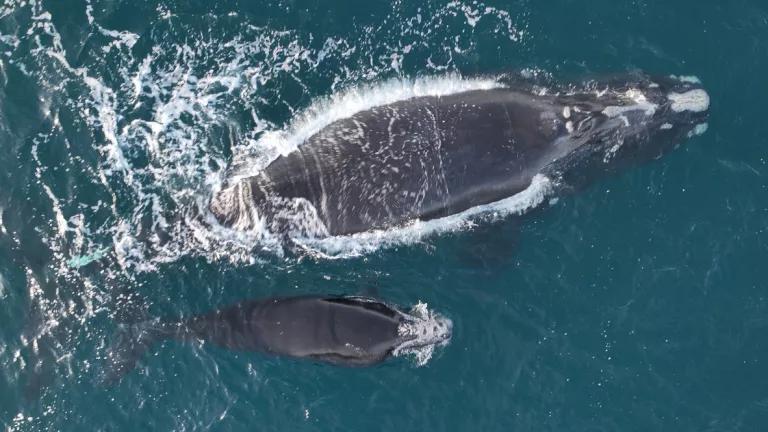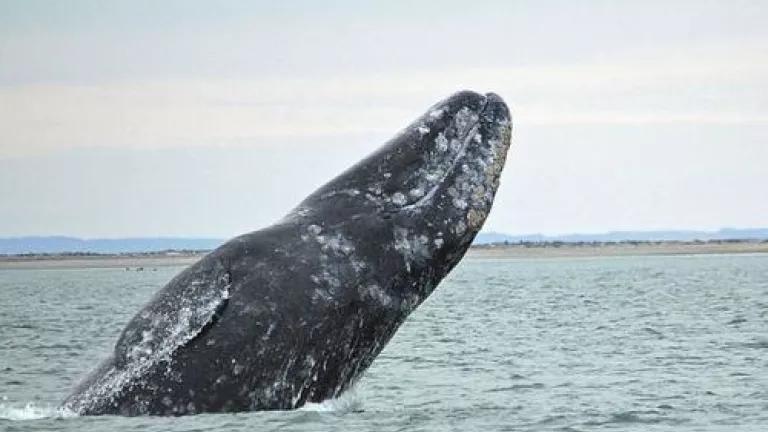
There are few places on Earth where the waters are warm enough, safe enough, clean, quiet, and abundant enough in food for gray whale mothers to raise their babies. Laguna San Ignacio, off the coast of Baja California, is one such magical spot. For hundreds if not thousands of years, this place, against all odds, has retained its pristine character, its utterly peaceful waters, its bounty of fish. Pregnant whales travel 4,000 miles from the Arctic to reach this haven, where they rest, give birth, and prepare their young for the long journey back home.
Protecting the lagoon has become one of NRDC’s most vital endeavors—not just because of what this place means for whales, but what it means for all of us. This work has been about much more than putting up a fence around a pretty place. Saving Laguna San Ignacio is a concerted, multipronged effort that involves communities and their values, government and its commitment, activists and their passion, people and their livelihoods, and the rule of law. It takes all this and more to solve any environmental problem. And if we can do it to defend a gray whale nursery in Mexico, we have a chance to achieve success anywhere.
When I visited the lagoon last month, I saw firsthand how very easy it would be for a pristine place to lose its magic. We stayed in a small, solar powered encampment, and went out to the lagoon in small, low-lying fishing boats called pangas. Whale mothers actually nudge their babies towards the boats to play. They come close enough to look us right in the eye. Whales are the dominant presence in this environment, and not just because of their size. This is their place, their home.
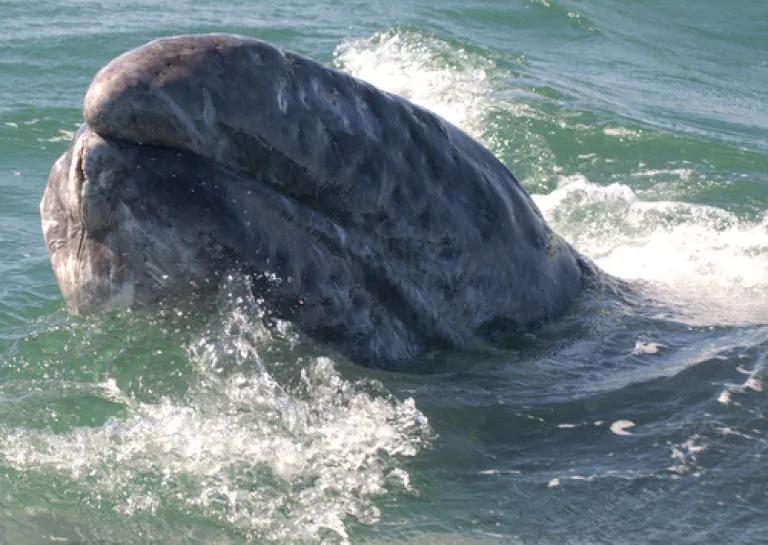
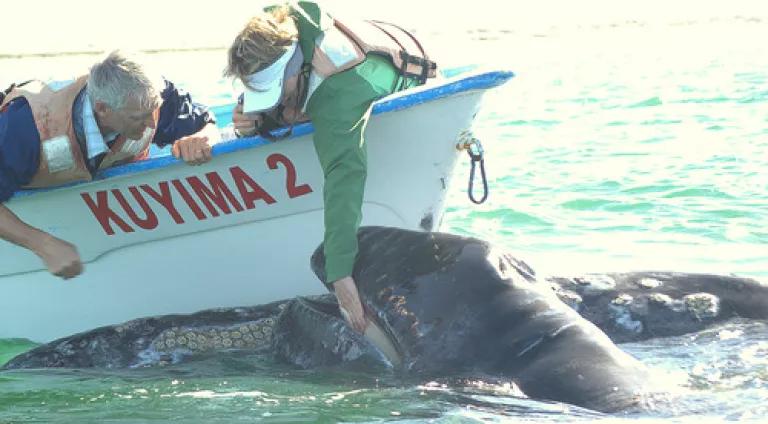
One night, however, a ship came in from San Diego, the only one allowed to anchor in the lagoon because it was from a research institution. Its angular silhouette dominated the horizon. Its lights blazed brightly all through the night, dimming the moon and stars. We were awakened in the morning by the harsh noise from its loudspeakers. One ship, just one ship, completely transformed the place.
NRDC’s work with local communities and partners in Mexico has helped stave off multiple threats to the lagoon, including plans to industrialize its banks with mining operations and the construction of megaresorts on its shores. As of today, NRDC and our partners have managed to secure protective measures for 340,000 acres of land and 150 miles of coastline around the lagoon.
Thanks to these efforts, Laguna San Ignacio should be able to continue to nurture generations of baby gray whales. But there are new concerns looming. As Arctic ice sheets retreat and sea temperatures rise, whales must travel further north to feed, making their journey south even longer, leaving less energy for breeding. Every few years, scientists notice “skinny” whales in the lagoon—overfishing, global warming, and ocean noise are all suspect. And as global warming opens up new shipping lanes in the Arctic, big ships could cut through the whales’ migration path.
(Just a few days ago, I saw Arctic ice breaking up as I flew the northerly route to China. I took this picture out of the plane window, and was reminded again, as Earth Day approaches, of how our actions can affect the farthest reaches of the planet.)
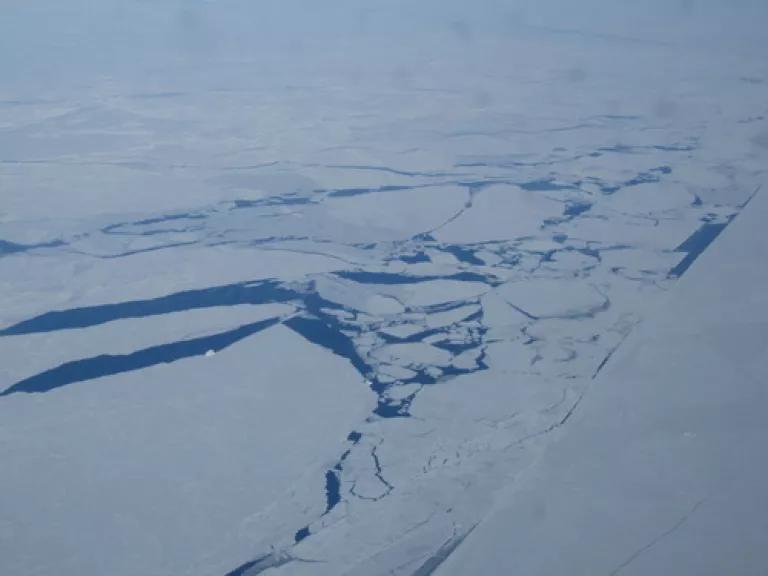
When migrating grays encounter cargo ships in busy southern California, the results are sometimes catastrophic. Naval sonar exercises off the coast of California are expected to harass, injure or harm gray whales 11,000 times each year. Oil development in the Arctic could disrupt their winter feeding grounds, and also bombard the whales with noise. These threats may seem less immediate than a blueprint for massive construction on the shoreline, but they can be just as devastating.
But we can fend off these looming threats, too, just as we’ve managed to successfully defend the lagoon from repeated attempts at industrialization. We know how to limit the carbon pollution that is warming the poles and fueling extreme weather disasters. We’ve started down the right path by weaning ourselves off oil, making our cars more fuel-efficient, expanding clean energy and boosting energy efficiency. We can protect important ocean habitat, as California has done, to ensure that our waters remain productive and full of life. And the Navy can take common-sense precautions to reduce the impact of sonar on whales while still ensuring that our fleet is mission ready.
Laguna San Ignacio may seem remote, but it is deeply connected to all of us, through the air, land, and water we all share, the natural resources that we draw upon every day. Every time I get out in nature I see how rapidly our planet is changing. But every day I am also reminded that we have the knowledge and ability to become more efficient in how we use our valuable natural resources, and reduce our impacts on the environment, creating a more resilient, healthier planet. For the whales, and for ourselves.




